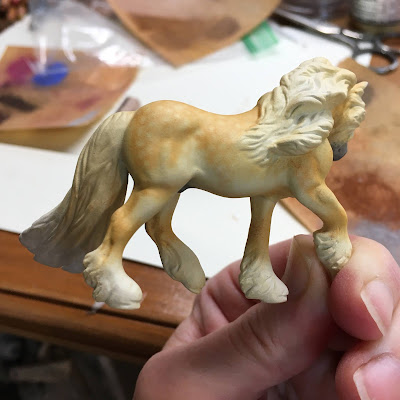I have been painting models since I was a teenager. I started with hand painting in acrylics and sometimes oils, but found my stride in college where I took an airbrushing class and made use of the airbrushing studio at school.
After college I moved to San Diego—a place with perfect weather if you want to airbrush outside most days of the year. Then I went back to school and the airbrushing studio for a second degree and many more custom minis.
My move to Boise worked out well for my airbrushing in my garage much of the year, but the cold months weren’t so great. It was during this time that I became interested in pastels and packed my airbrush away.
So long story short... I just got out my Badger airbrush after a ten year hiatus and a move to Michigan. And it still works!
I, however, am a bit rusty and only managed to paint some base coats (and spill paint all over the garage floor.)
Here’s a little pony I’ve been working on:
 |
| Over the base coat, I’ve added a little Pan Pastel Gray, Pearl Ex Sparkle Gold, and a little yellow pastel. |
 |
| Starting to shade with yellow pastel stick dust and highlight again with Pearl Ex. |
 |
| Dapples drawn on with a very light brown Rembrandt pastel stick. |
 |
| The dapples took another layer of brown. |
 |
| Pretty much ready for his details. |
Pastels over a simple base color is a fun process... one I’m certain many artists have put into their workflow long ago. I’m excited that my airbrush is still up to the task.

Comments
Post a Comment